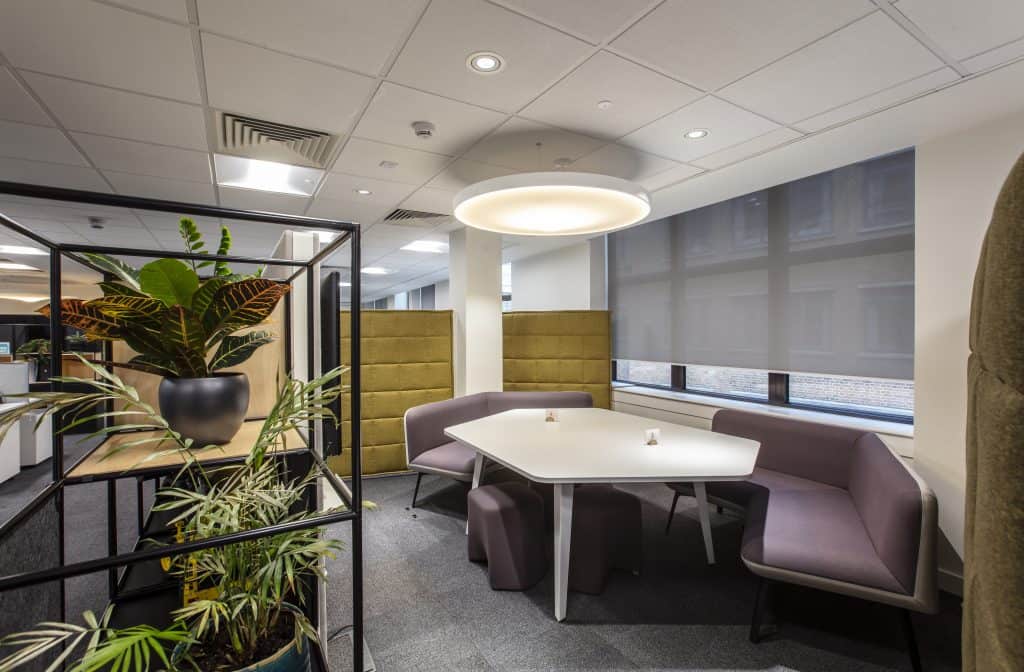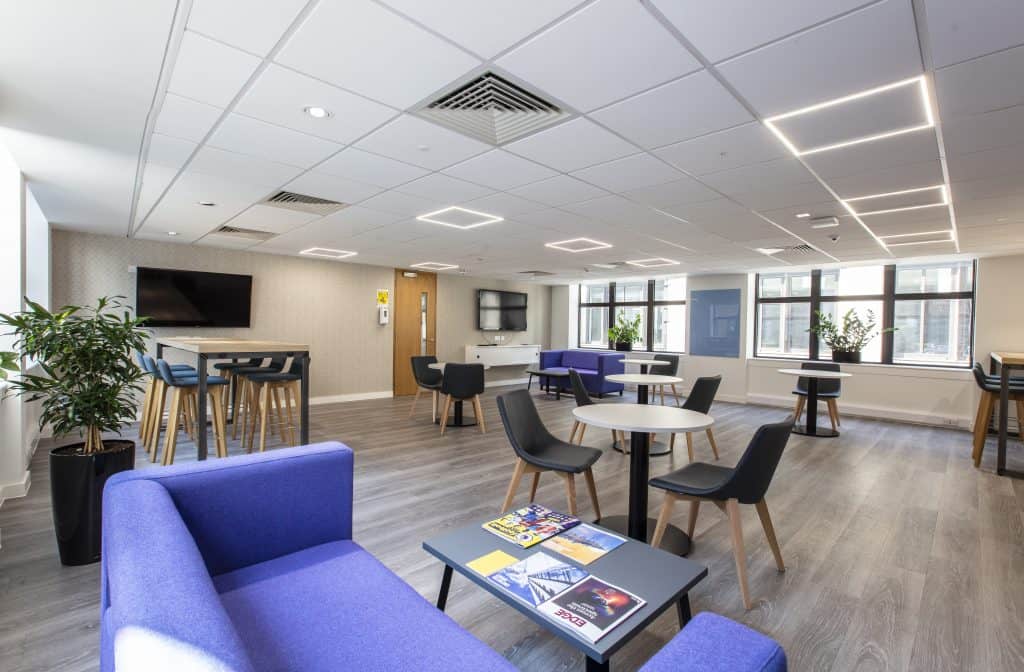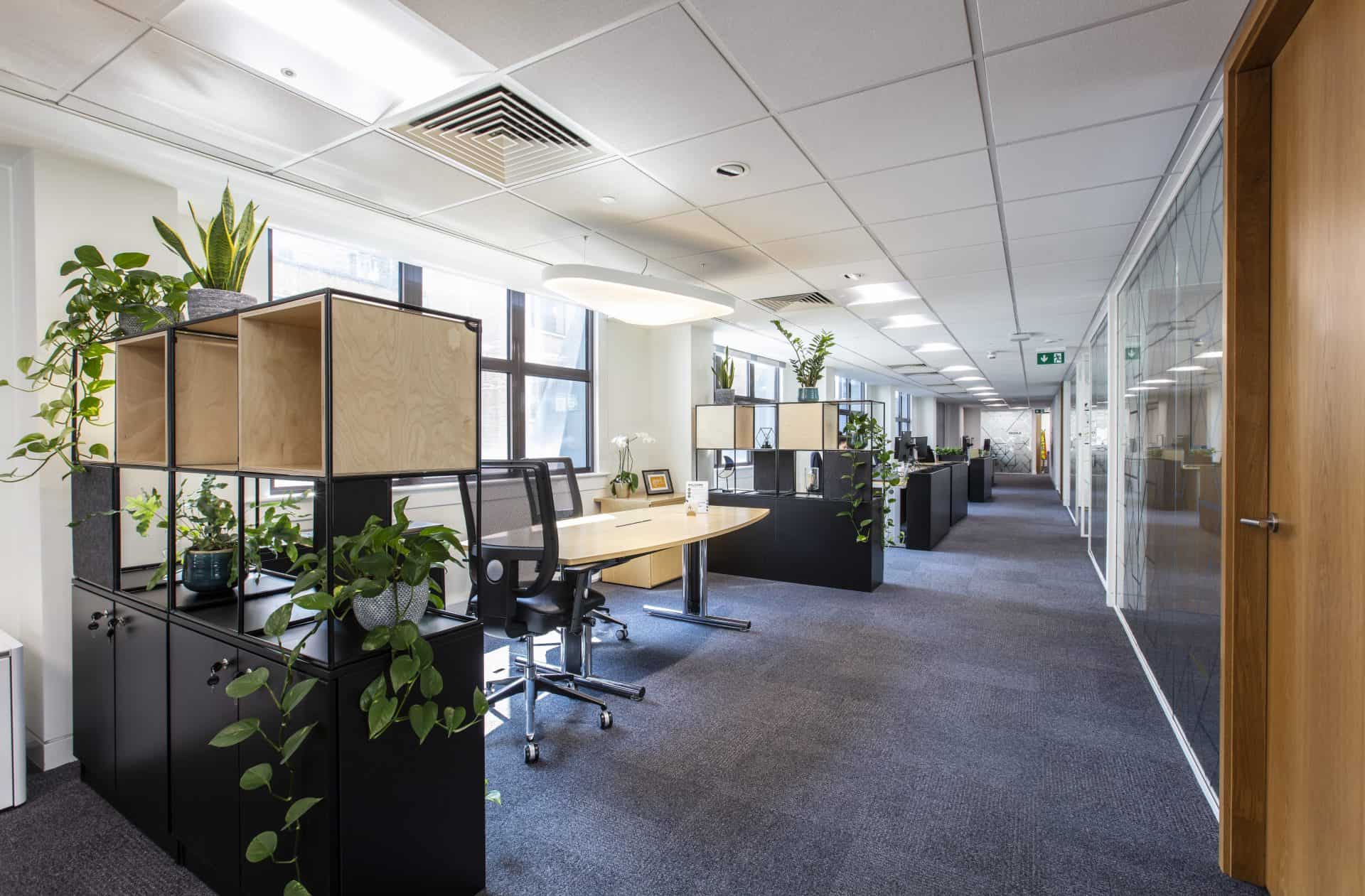In March 2020, Willmott Dixon Interiors completed the £1m refurbishment of its Head Quarters in London, comprising five floors and a ground-floor meeting room suite. The aim of the project was to improve the health, happiness and productivity of its people. In planning and delivering the project, we also learned some useful lessons which can be applied to our customers’ future schemes.
We wanted an environment that increased staff satisfaction and happiness, whilst enhancing the image of the company to visitors, including prospective employees, customers and our supply chain partners. Where practicable we also wanted to solve the everyday frustrations and inefficiencies expressed by our colleagues.

Surveys and team consultations helped us to diagnose what needed to change, informing the final design and budget. Based on feedback from our people and our understanding of what good should look like, the project set about delivering the following enhancements:
Productivity and efficiency
Lighting plays a crucial role in workplace wellbeing. It is vital to incorporate as much natural light as possible. We deployed circadian lighting which aligns to the natural daylight cycle and has been shown to improve productivity.
Lighting strategies should also vary, depending on how each zone will be used. We deployed task lighting in areas such as team spaces and around desks. Passive infrared sensors (PIR) help to control and optimise the lighting. Overall, LUX (brightness) levels have increased.
Health & Wellbeing
We spend 90% of our lives indoors, constantly breathing in a variety of toxins. Hence measures that reduce the presence of possible toxins can have a huge positive impact on health. Measures to do that included deep-cleaning ventilation ductwork to improve airflow and remove particulates, a cleaning regime that used products without VOCs and the introduction of plants to help purify the air.
The temperature of working environments also impacts on people’s state of mind, whether too hot or too cold. We improved the heating and cooling systems and changed the temperature set-points to deliver better comfort.
Reducing frustration
Productivity can plummet in noisy environments, as it affects our mood and motivation. We installed acoustic panels and baffles, introduced quiet spaces and installed cubicles to allow private calls.
Collaboration and teamwork
The look and feel of a place – design character, physical layout and furniture – affects us psychologically and impacts on relationships with colleagues. Our new office offers a range of different spaces: areas for collaborative working, flexible hot desking, extended breakout space with soft furniture for relaxing.
Bringing elements of nature indoors through biophilic design has been shown to reduce stress levels and improve interactions and mood. We have done this though the introduction of plants and natural materials. We also paid attention to the quality and appearance of wall coverings and art throughout the building.

Lessons learned
Designing for health, wellbeing and productivity can be a daunting process. There is no exacting science to help decision-makers pinpoint the best available initiatives. Although every project is different, there are steps that those delivering schemes can deploy to respond to the needs of the business and its employees:
- Listen to feedback from your colleagues – they understand the working environment better than anyone. Use feedback to help diagnose specific improvements. Manage their expectations as you can’t please everyone
- Spend a decent amount of time on the design – seek feedback on your proposals, and then seek more feedback. Involve people in the decision-making process but don’t let it turn into a ‘wish list’ of wants and desires.
- Don’t be fooled by the latest health and wellbeing fads and gimmicks. Ensure your decisions are firmly rooted in your cultural ambitions, taking note of how your people work, or need to work. Focus on the things that provide the greatest impact.
- Communicate your decisions and success stories. Remind people why you are making these improvements and explain the benefits. Share any success stories and be prepared to listen and learn
- Improving the health, wellbeing and productivity of your people is not a one-off investment decision. Set up a Task Team to help maintain interest and research on the latest trends. Be prepared to change and adapt with the times.
Adapting to our new environment
Providing physical infrastructure such as flexible workspaces, quiet zones and social space has helped people to form new habits and adjust. A proactive communications approach, where we took the time to explain the benefits, gave people the confidence to embrace the changes we implemented. People are happier, more productive and have a newfound respect for the working environment.
